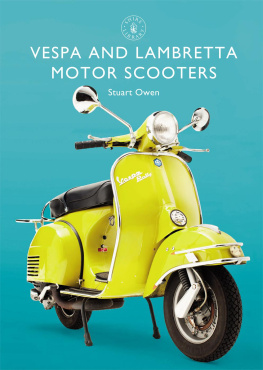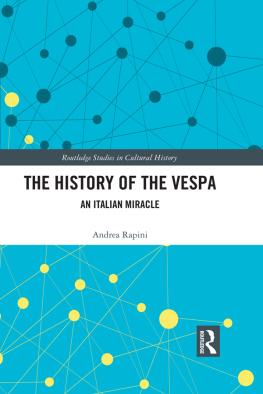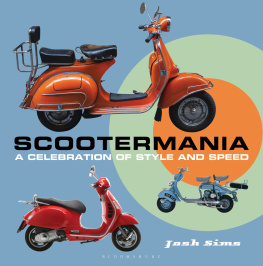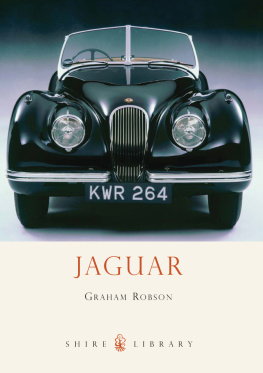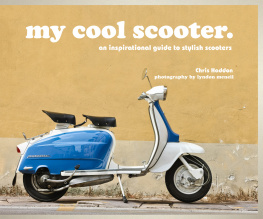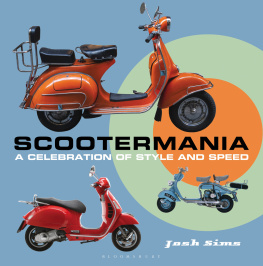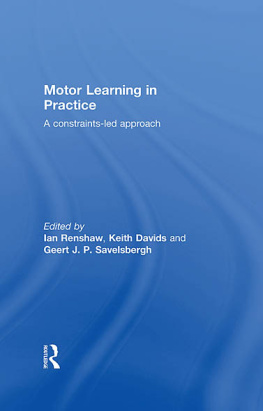CONTENTS
INTRODUCTION
T HE ROOTS OF motor scooter evolution reach as far back as the early 1900s. The initial attempts were fairly primitive in design but nevertheless showed intent when it came to producing a cheap, compact method of transport. During the following two decades several manufacturers in different countries attempted to build on these early creations, but the idea of the motor scooter somehow never quite took off.
All of this was about to change, however, in the aftermath of the Second World War. Most countries in mainland Europe had been devastated by the conflict and would require significant re-building of their infrastructure. Transport was a key part of this and any country that could mobilise its population would have an advantage. With cars available only to the wealthiest in society, the motorcycle was now in its element, being the sole realistic option for affordable transport. There were some disadvantages, however: motorcycles were heavy and cumbersome machines, often with an engine that was big and difficult to start. They offered very little in weather protection and had an acute lack of storage space. Even more noticeable was the fact they were not designed for the female rider, with a large petrol tank to sit astride.
In 1946 the Italian company Piaggio produced its first scooter: the Vespa. Different from many predecessors of scooter design, it incorporated many new and revolutionary ideas. The Vespa was followed in 1947 by the Lambretta, designed by the Innocenti Company of Milan, and this was also markedly different from scooters of the past. Both makes quickly became popular with the Italian public and by the early 1950s were sold in huge numbers hundreds of thous ands each year.
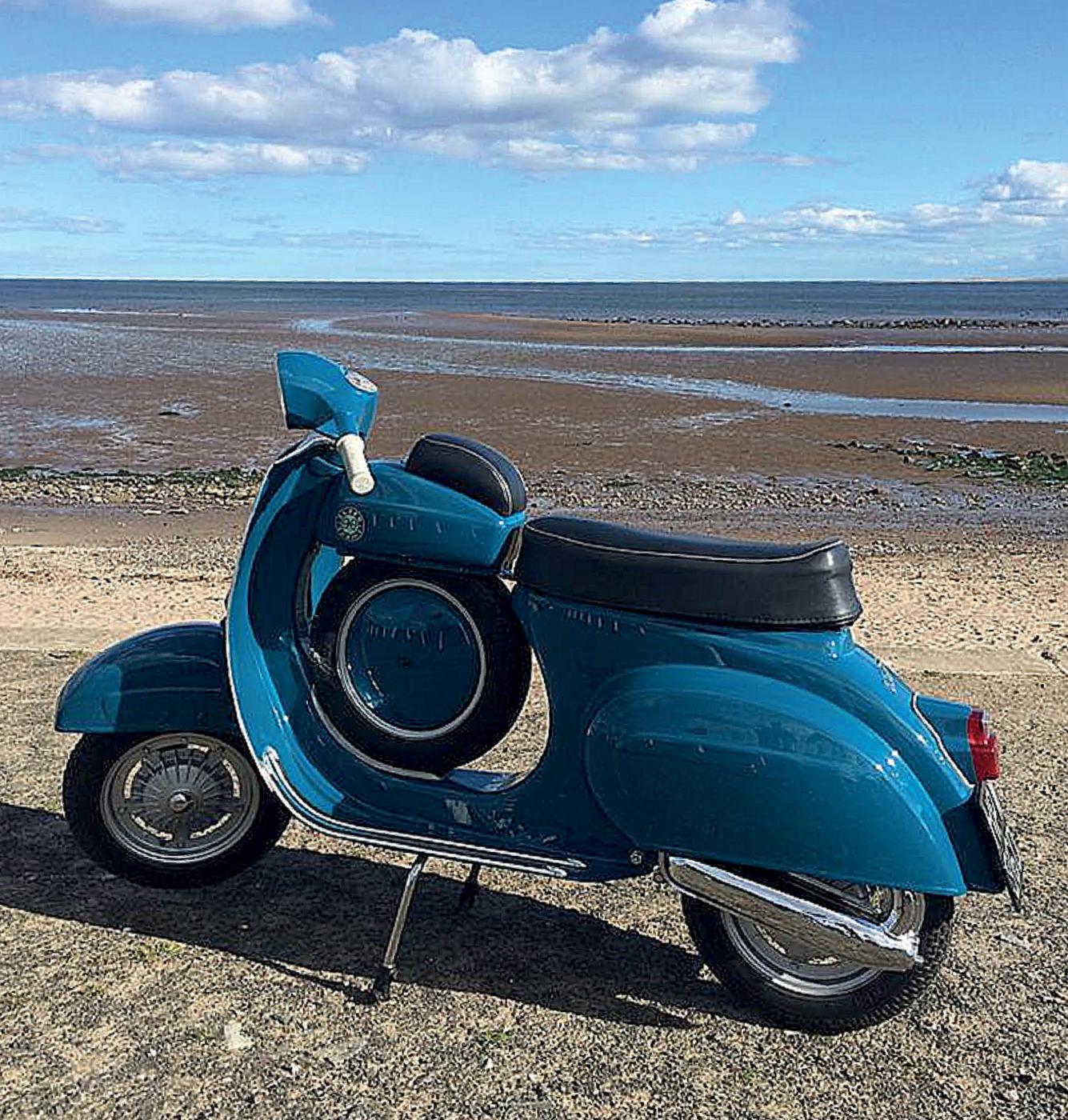
Though it had a rather small engine, the Vespa SS90, introduced in 1966, gave amazing performance. It was the first true sports scooter produced by Piaggio, but strangely its success was not capitalised on.
Keen to exploit their success on home soil, both companies strove to export the modern scooter concept to other countries. By the 1960s the motor scooter had become a huge success across mainland Europe and the ideas embodied in the Vespa and Lambretta were copied by virtually every other motorcycle manufacturer within the industry. This paved the way for some often rather bizarre designs as they tried to capture a part of the market share. But it was the Vespa and Lambretta that led the way, in both design and marketing, and it would stay that way throughout the boom years of scoo ter production.
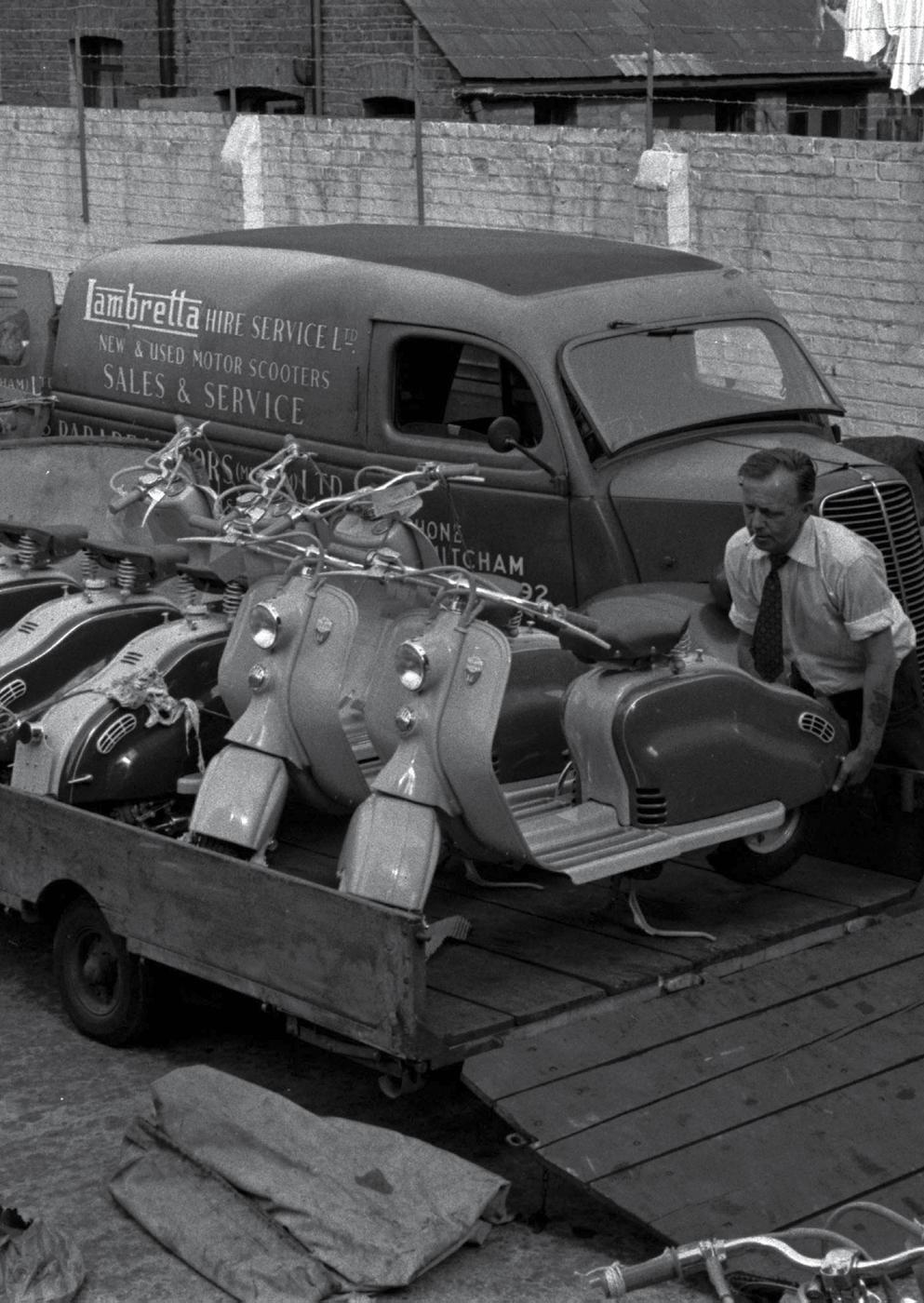
In the early days of Lambretta Concessionaires scooters were dispatched on open-frame transport to show the public exactly what was on offer.
THE BIRTH OF THE MOTOR SCOOTER
I TALY HAD SUFFERED its fair share of devastation during the Second World War. The industrial north of the country in particular, where the most damage to factories had been inflicted, needed to be rebuilt as quickly as possible in order to help the Italian economy grow, and getting the workforce mobile would prove an essential part o f this process.
Piaggio was a company based in Pontedera and had been responsible for producing, amongst other things, fighter planes. During the six-year conflict, the factory was a major target and had been heavily bombed. It was in a bad state of repair and was in need of major rebuilding from the ground upwards. Rather than returning to the aerospace industry, however, it was decided that the company should address the shortage of cheap affordable transport that the country so badly needed. In the summer of 1946, Piaggio began producing its first two-wheeled vehicle, which would be named the Vespa (meaning wasp in Italian). Fitted with a 98cc engine at the rear, 8-inch wheels and a pressed steel frame, it was neat and compact. With its step-through design and wide leg shields, it offered both a comfortable riding position and adequate weather protection. It was a unique concept; different from previous scooter designs and with cheap manufacturing costs, it would be more affordable to the general public.
Within a year, Innocenti of Milan had produced their first scooter: the Lambretta (named after the river Lambrate, which ran alongside the factory). Like Piaggio, Innocenti had been involved in the war effort and the vast factory in Milan had been heavily damaged during the long campaign. A rebuilding programme began almost immediately after the war, as Innocenti decided to answer the governments plea for affordable transport. Without any hesitation, the first Lambretta was soon off the production line in the autumn of 1947. The design differed from that of the Vespa in many ways but still stuck to the compact two-stroke engine, small wheels and step-through design. Innocenti had originally been involved in the building industry and specialised in the manufacture of scaffolding. This was clearly evident in the frame design, which featured a steel tube frame to which everything else was bolted. Legend has it that the first Lambretta frames were actually made from old scaffold tubes. The model A, as it was referred to, featured a slightly bigger 125cc engine than that of its rival, the other significant difference being the much longer extended upswept handlebars compared to the traditional positio n on the Vespa.
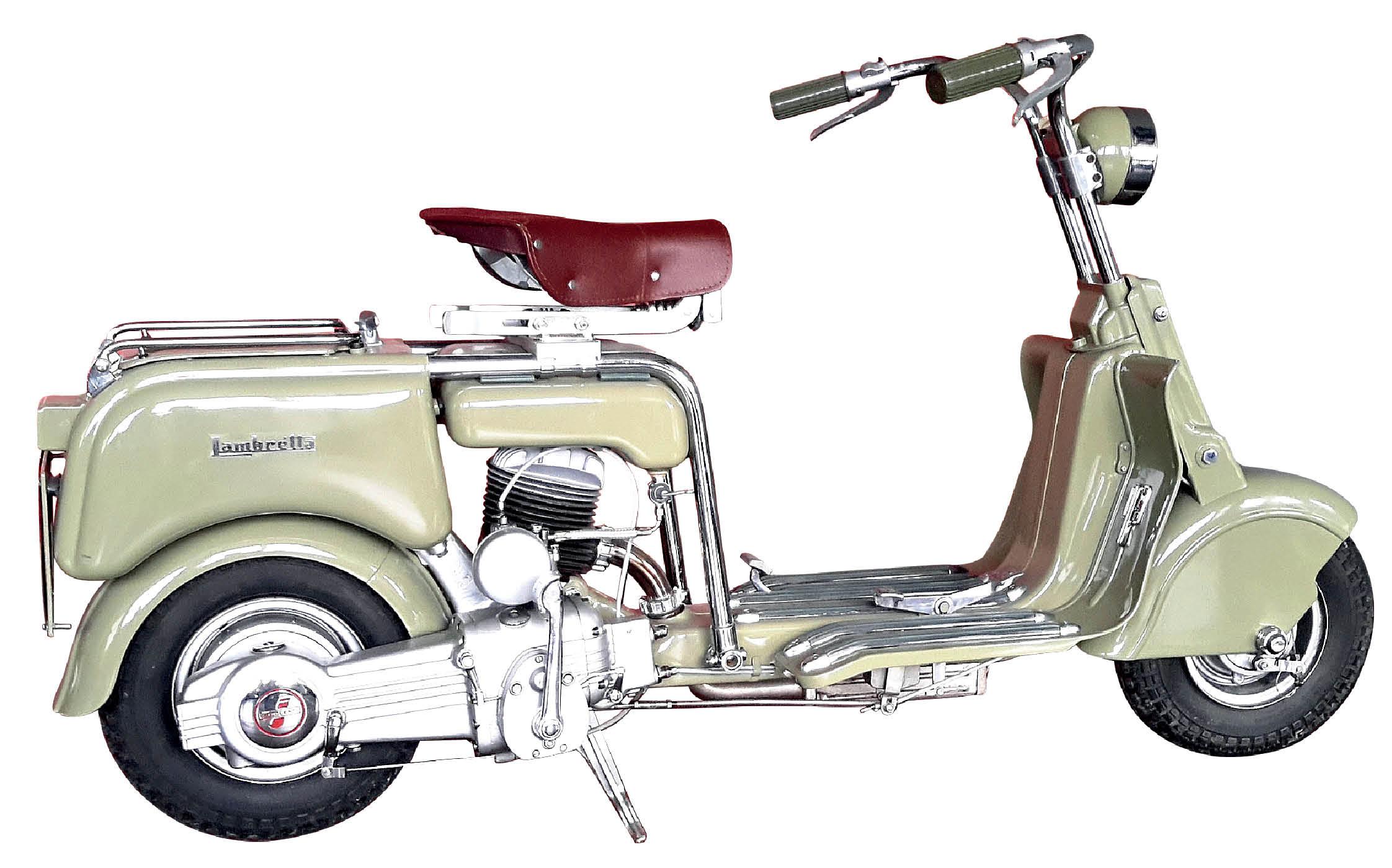
The Lambretta model A, first introduced by Innocenti in the autumn of 1947. This would be the only Lambretta to feature a foot gear change; all subsequent models had handlebar control.
Production from both factories quickly started to flow and it wasnt long before the Italian public began to take notice. Within months many of the cities and towns in the north of the country were deluged with these modern-looking machines zipping around the streets, the warm and sunny Italian climate proving ideal for two-wheeled vehicles. It soon became apparent to all those concerned that the motor scooter was not a quick fad and was there to stay. Both companies had cleverly designed machines that served the purpose of cheap economical transport and the Italian nation fell in love with them. Soon enough other smaller manufacturers attempted to join in the growing trend as the financial reward was deemed too great to miss out on. Innocenti and Piaggio had a head start, however, and quickly developed new models to combat any threat from t he competition.
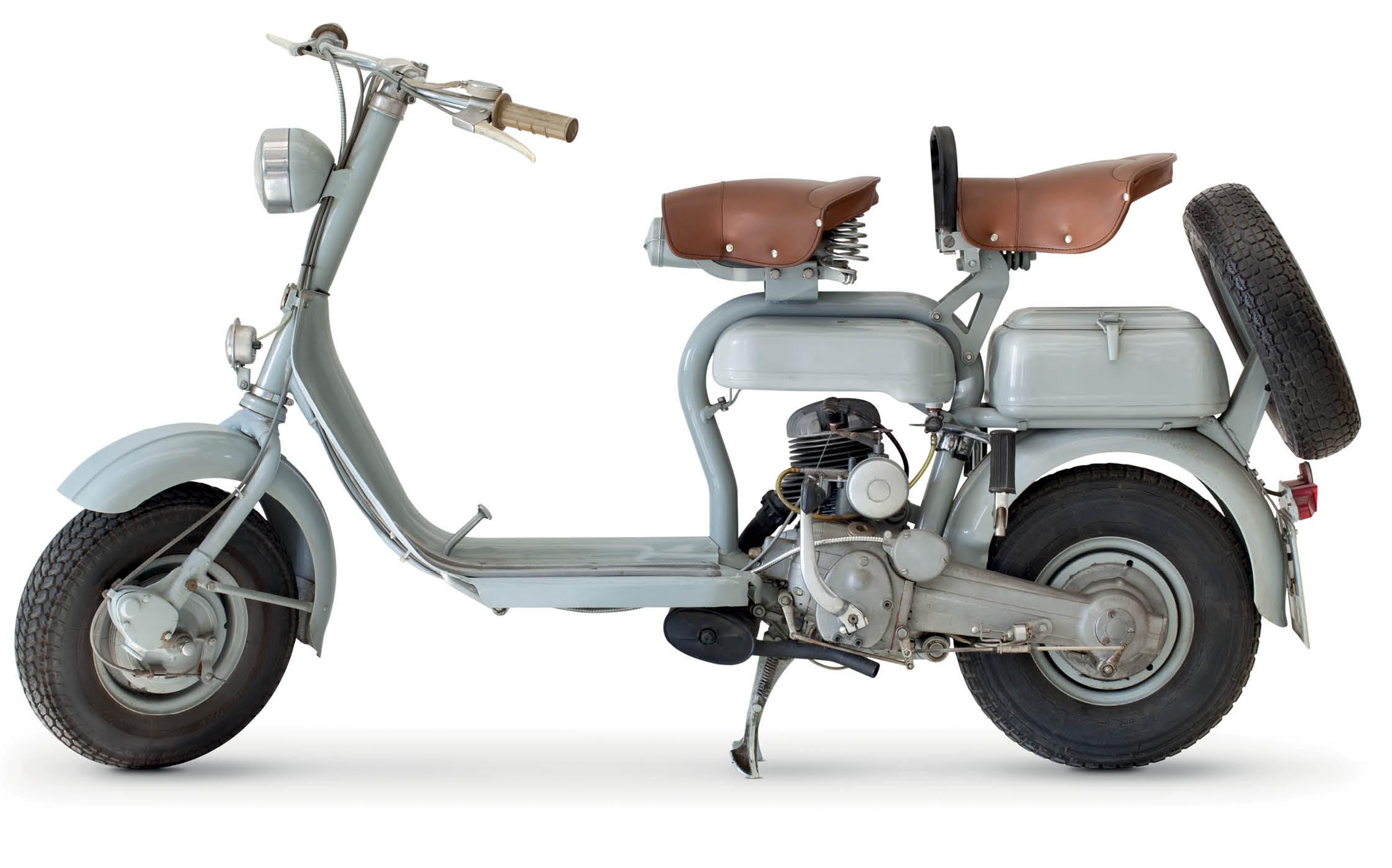
The early Model D Lambretta with its open-frame design soon became popular in Italy. With its affordable price and economical engine, this was the Lambretta that put Innocenti firmly on the map.
Piaggio introduced a more powerful 125cc model, which also incorporated a rear suspension and revised front end. This was quickly picked up on by many as a utility vehicle and it wasnt long before sales spread to more remote and rural areas of the country. It was an ideal way to get around in areas where there was little (if any) public transport and at a small cost. As capacity was stepped up in the factory the new model was beginning to sell in the thousands rather than hundreds. The Lambretta was also revamped with the introduction of the Model B even though the A had sold around 15,000 units in its first full year of production. There were no major differences between the two models except that the gear change had been moved from a foot pedal to a twist grip on the handlebars a modification that would remain on every other Lambretta model right up to the end of production.

